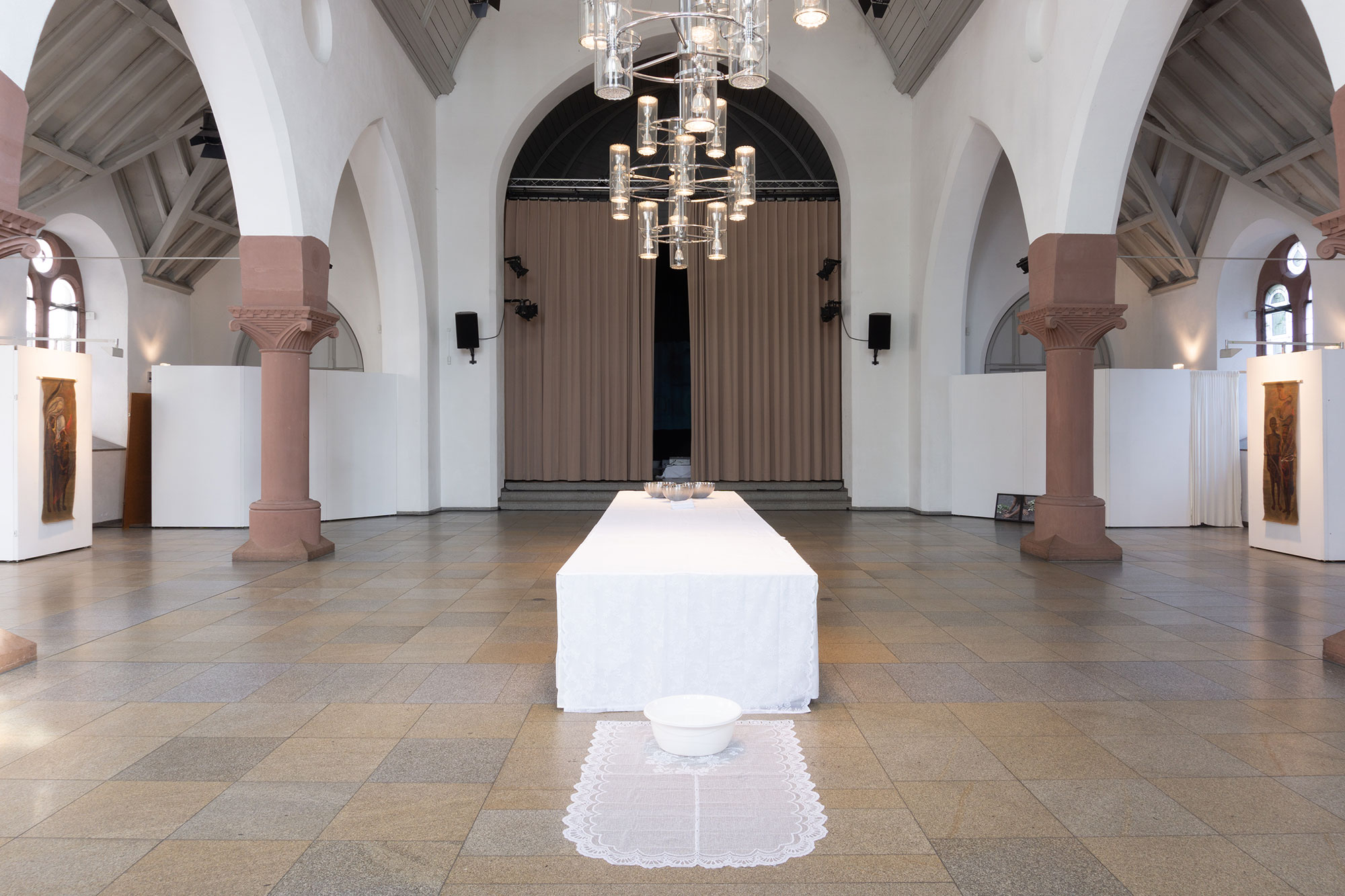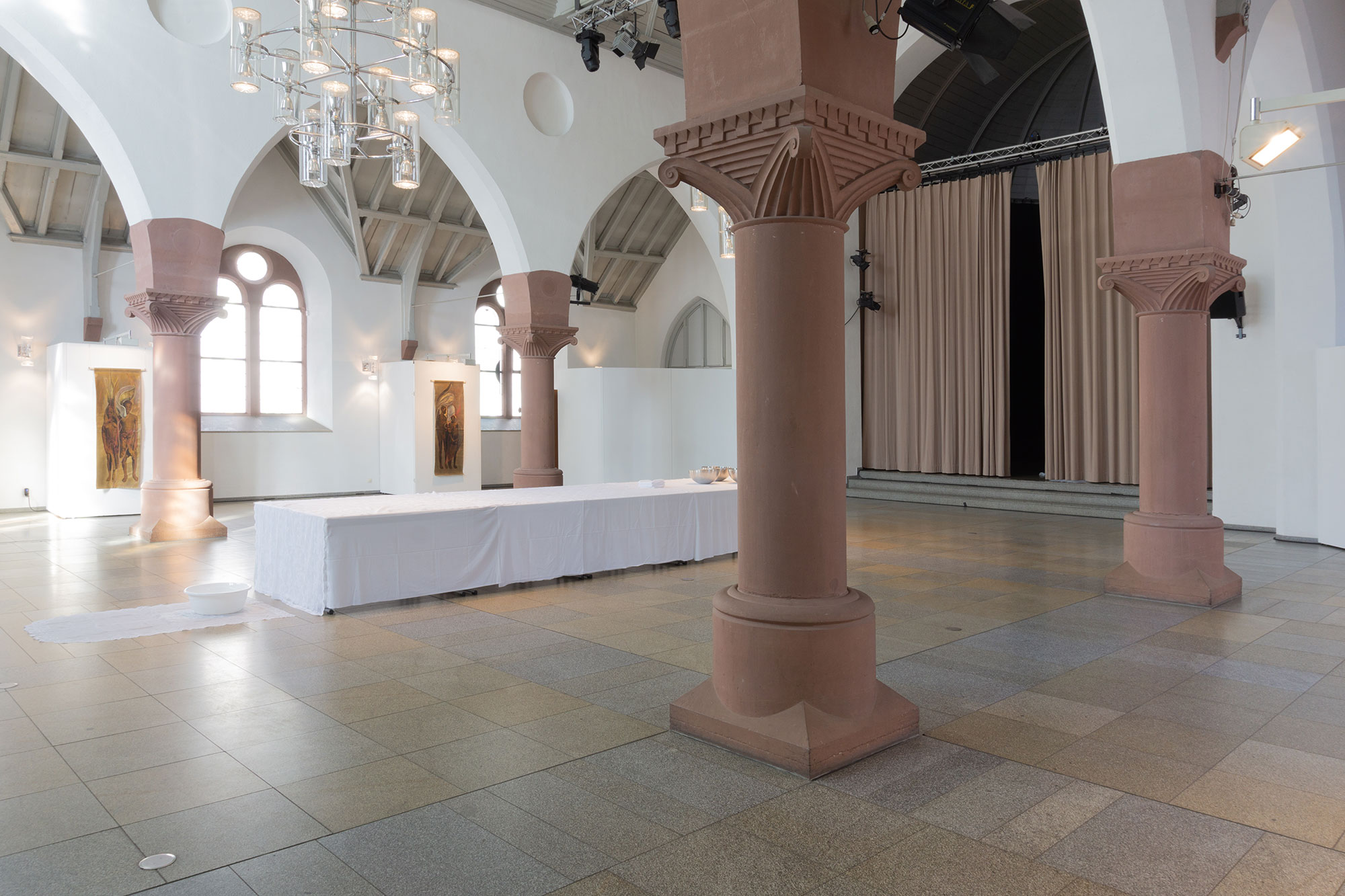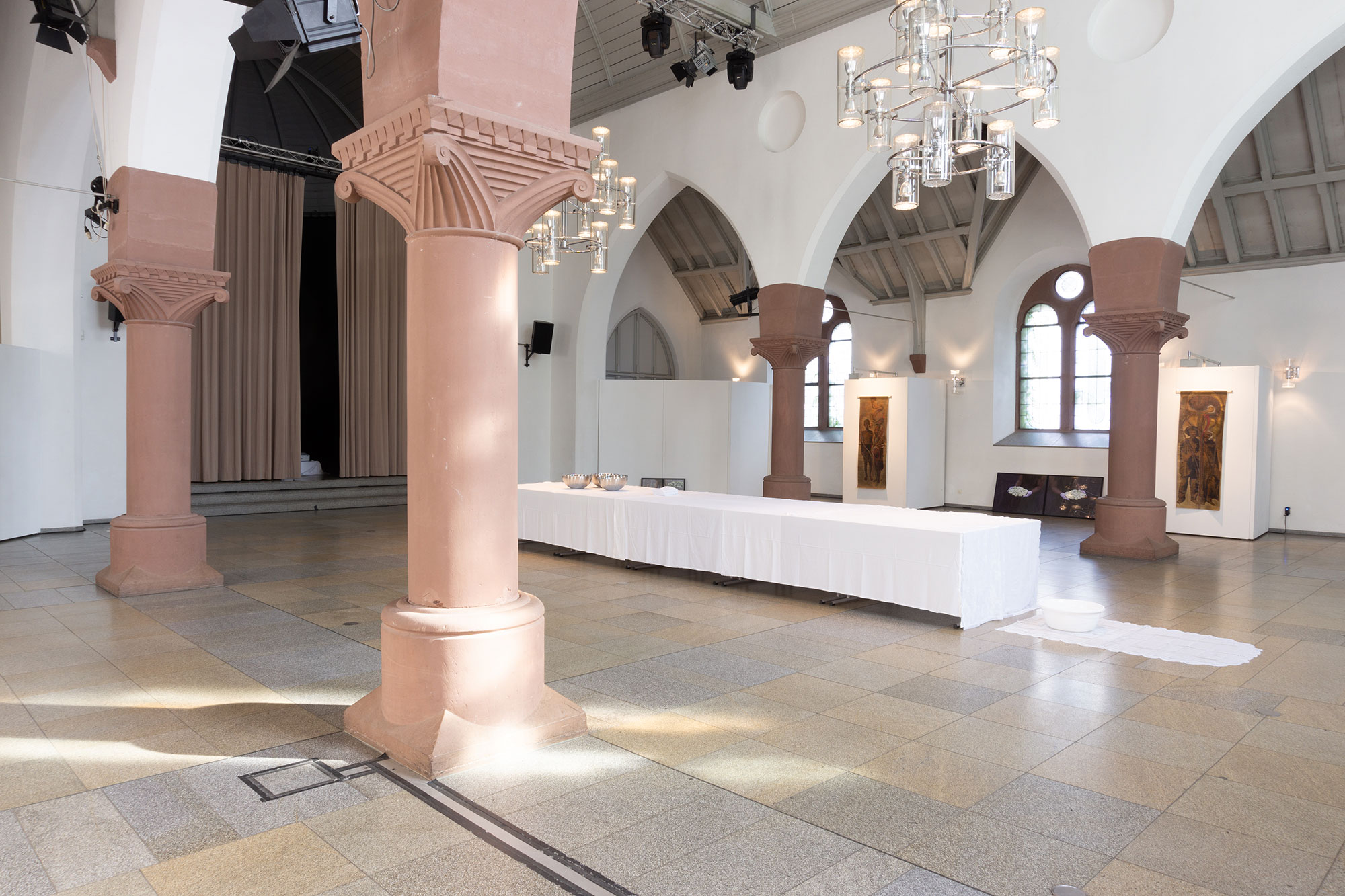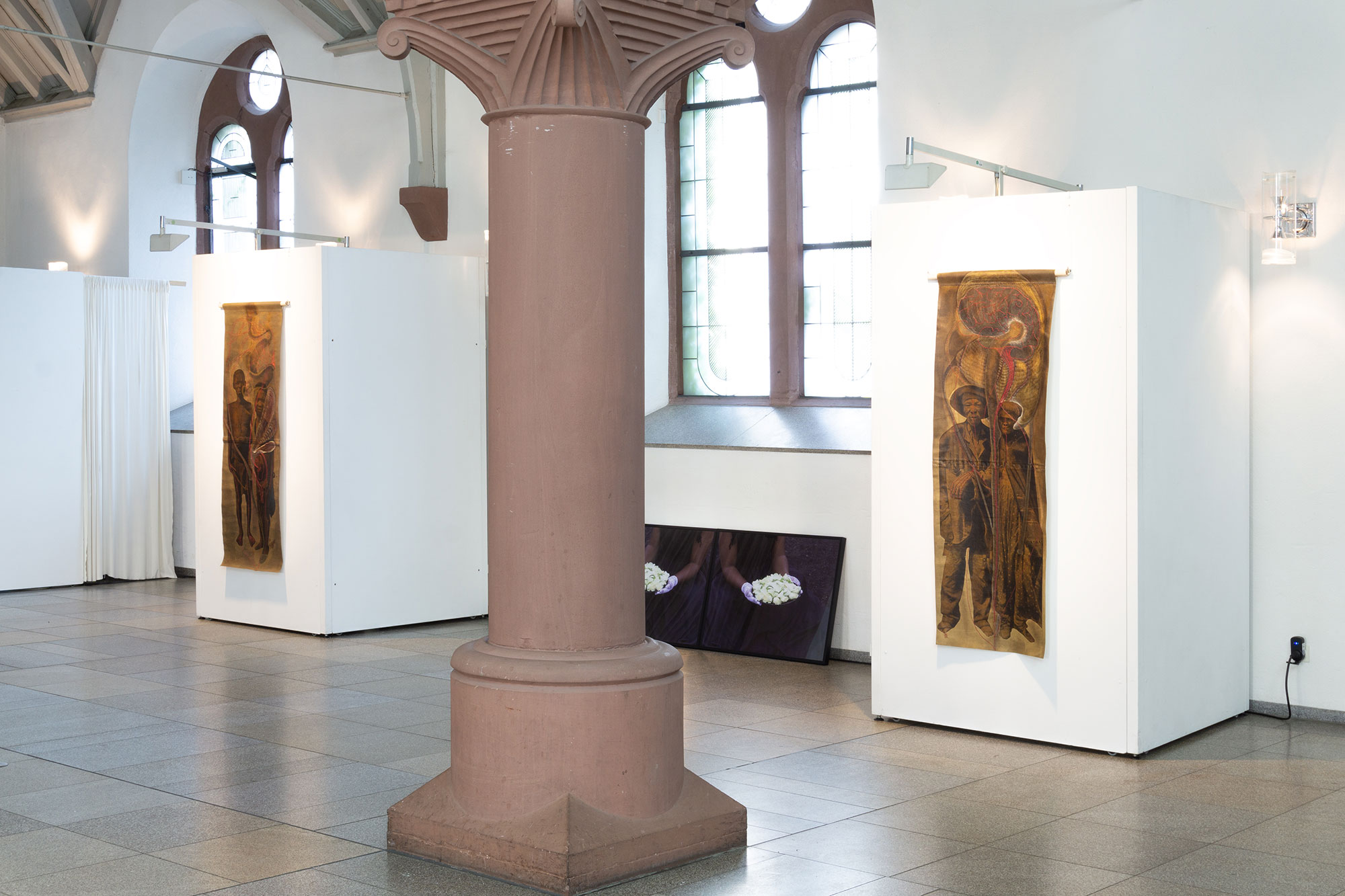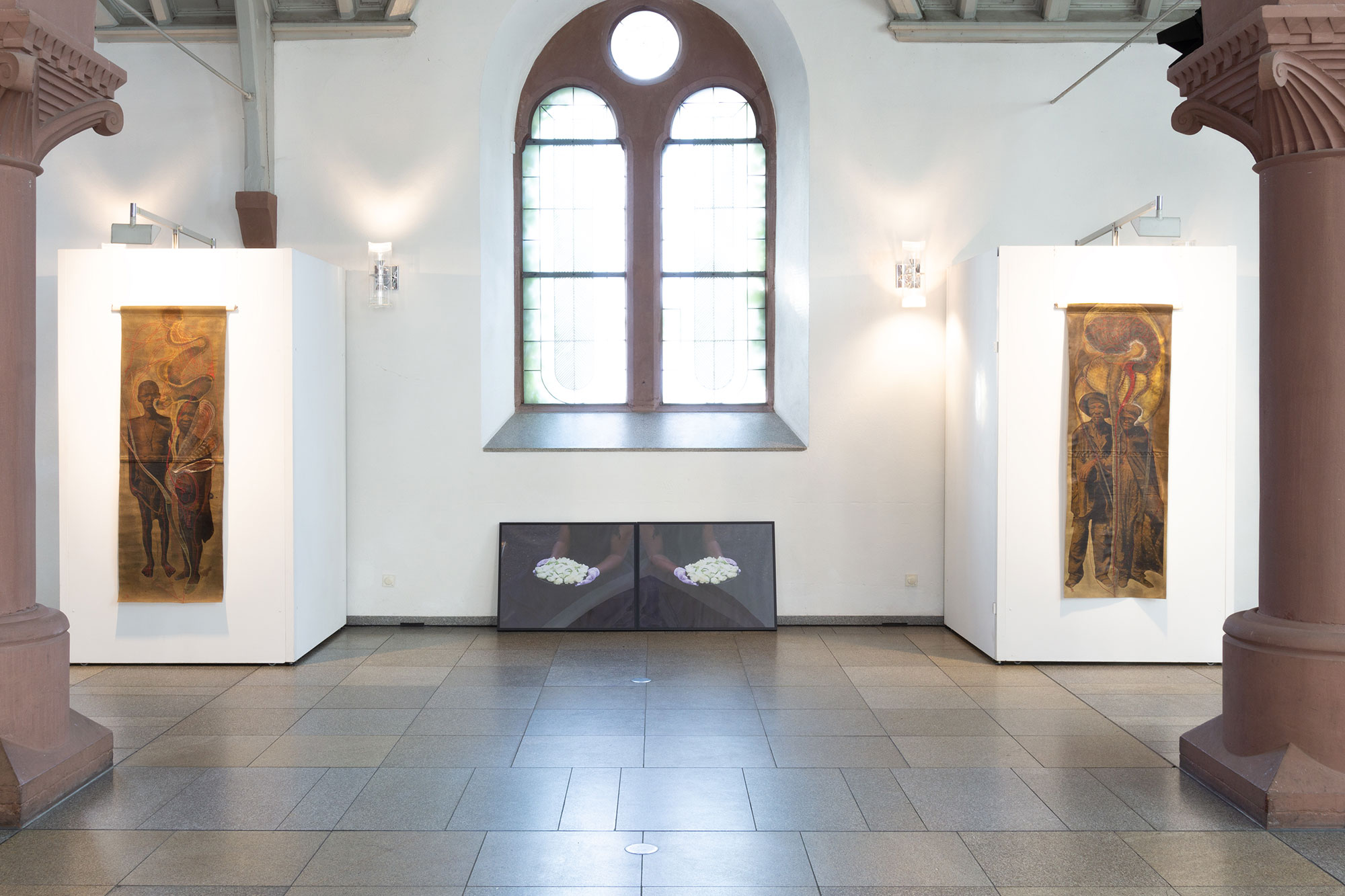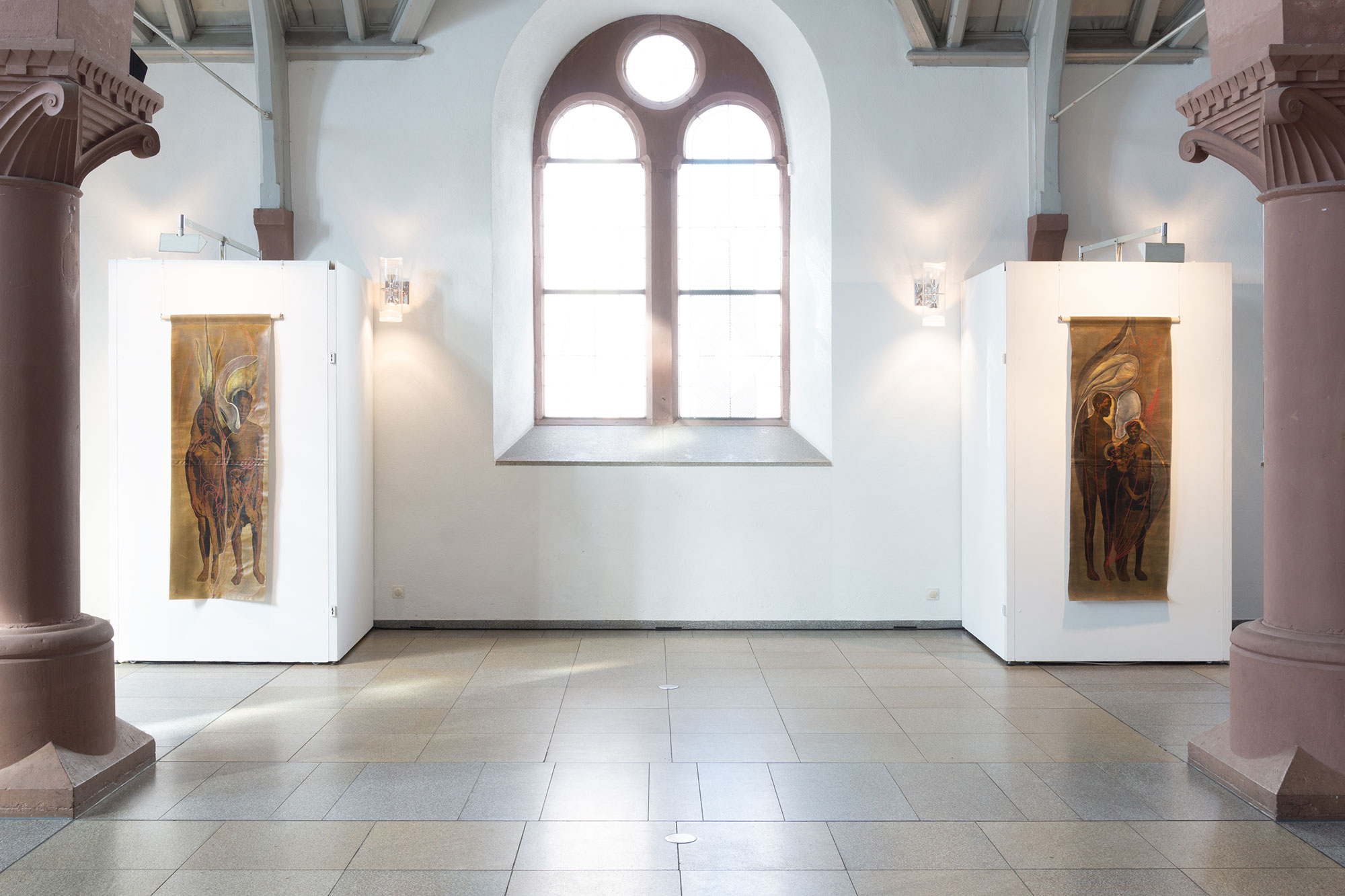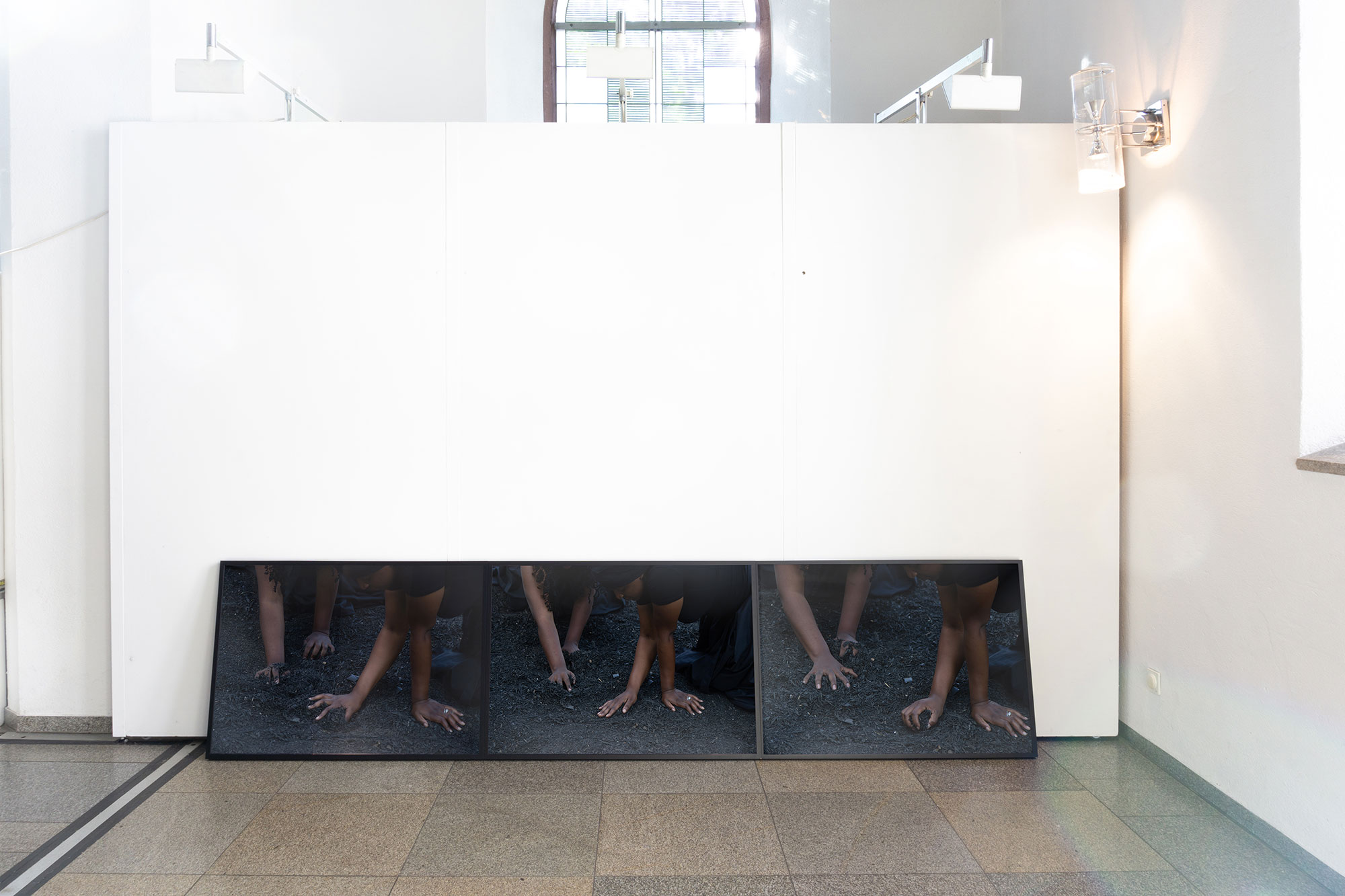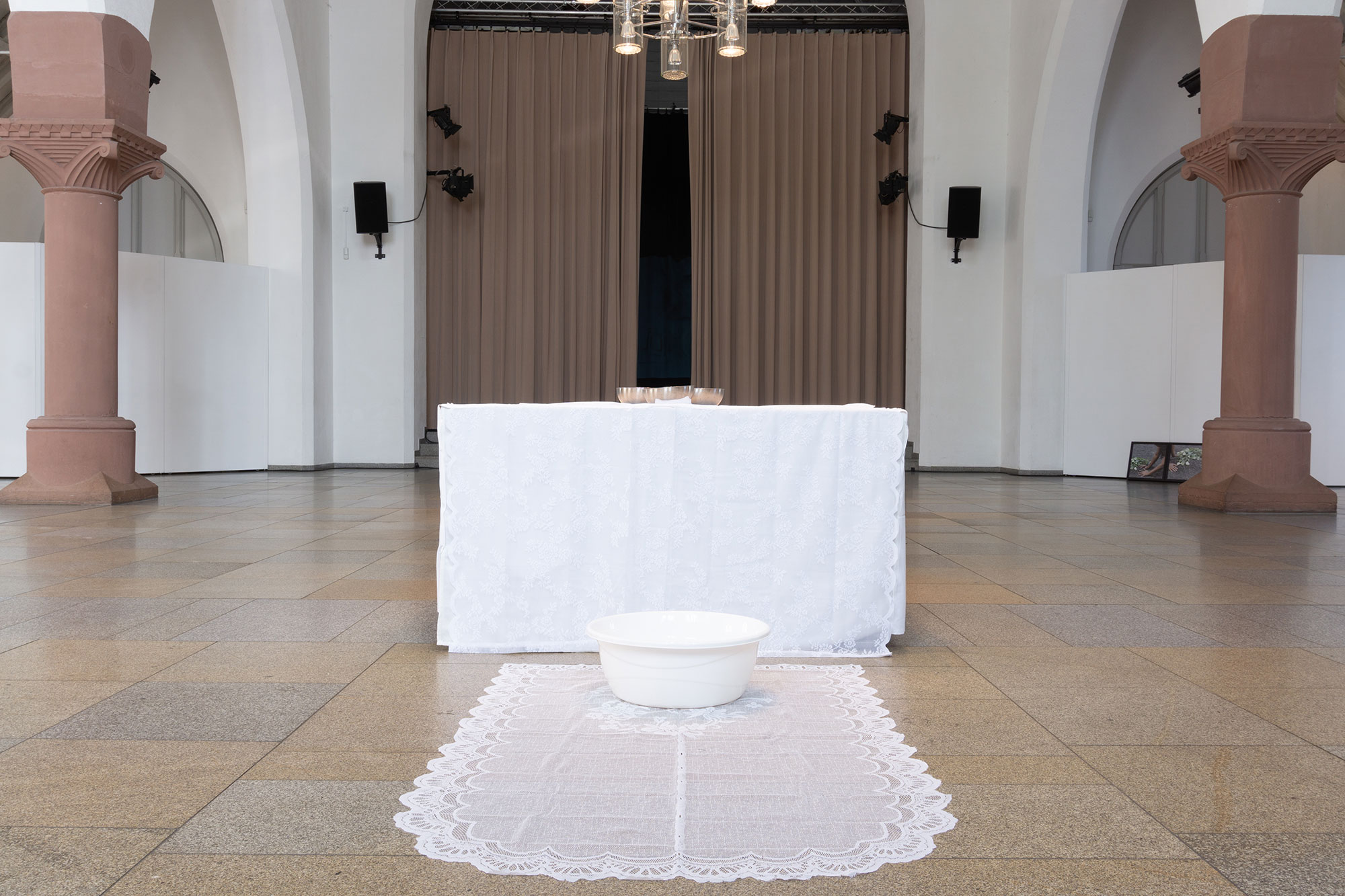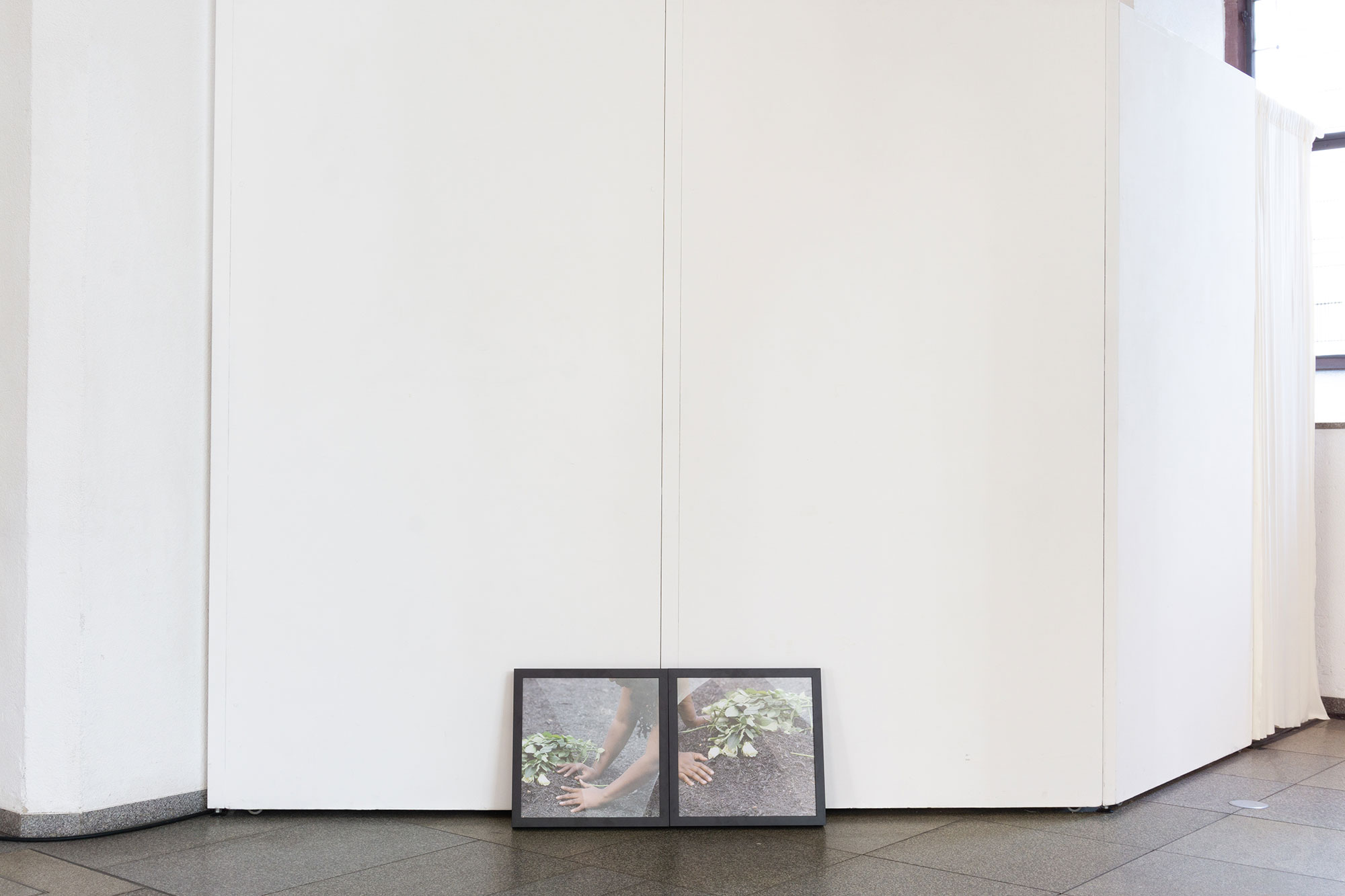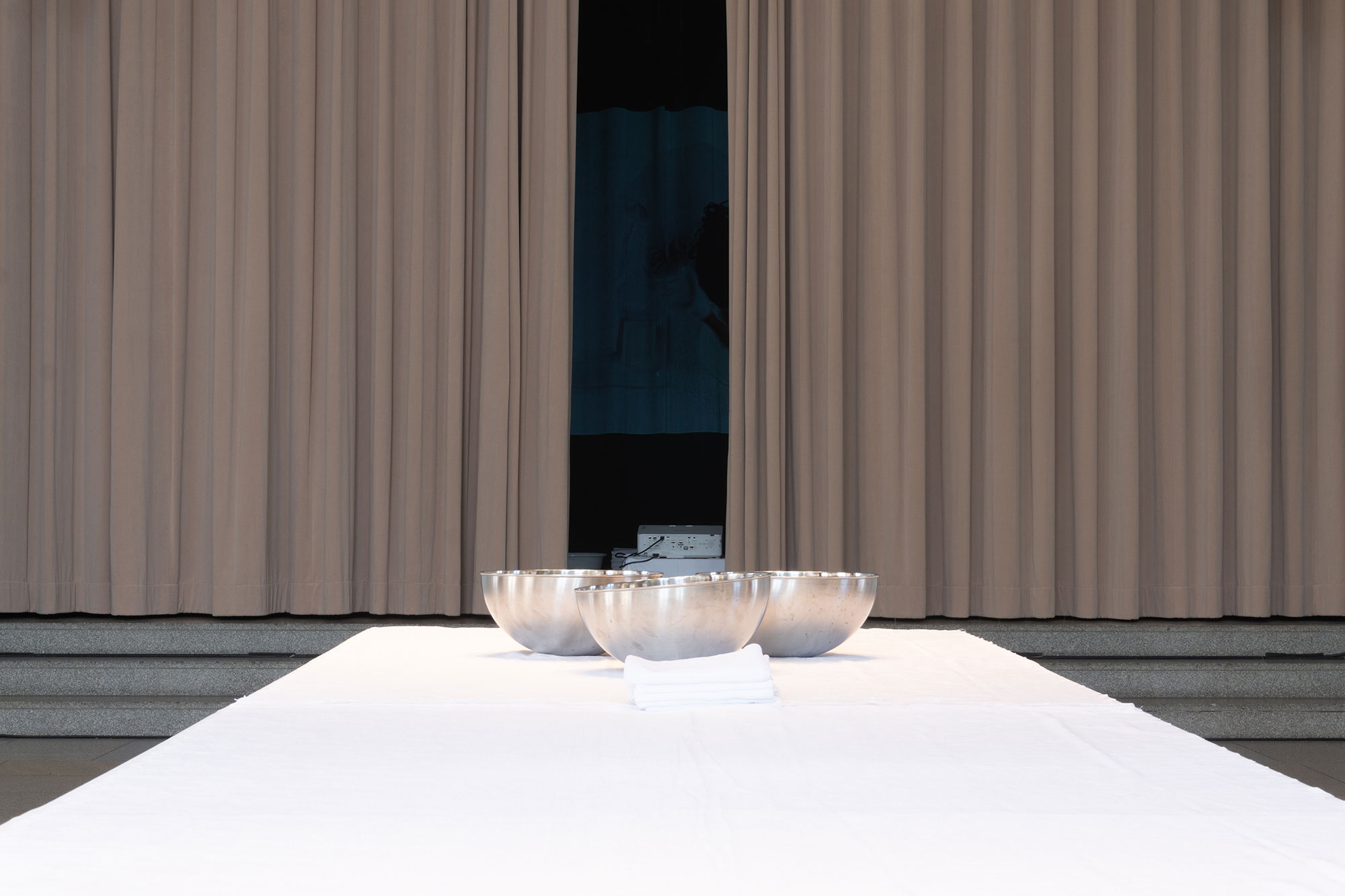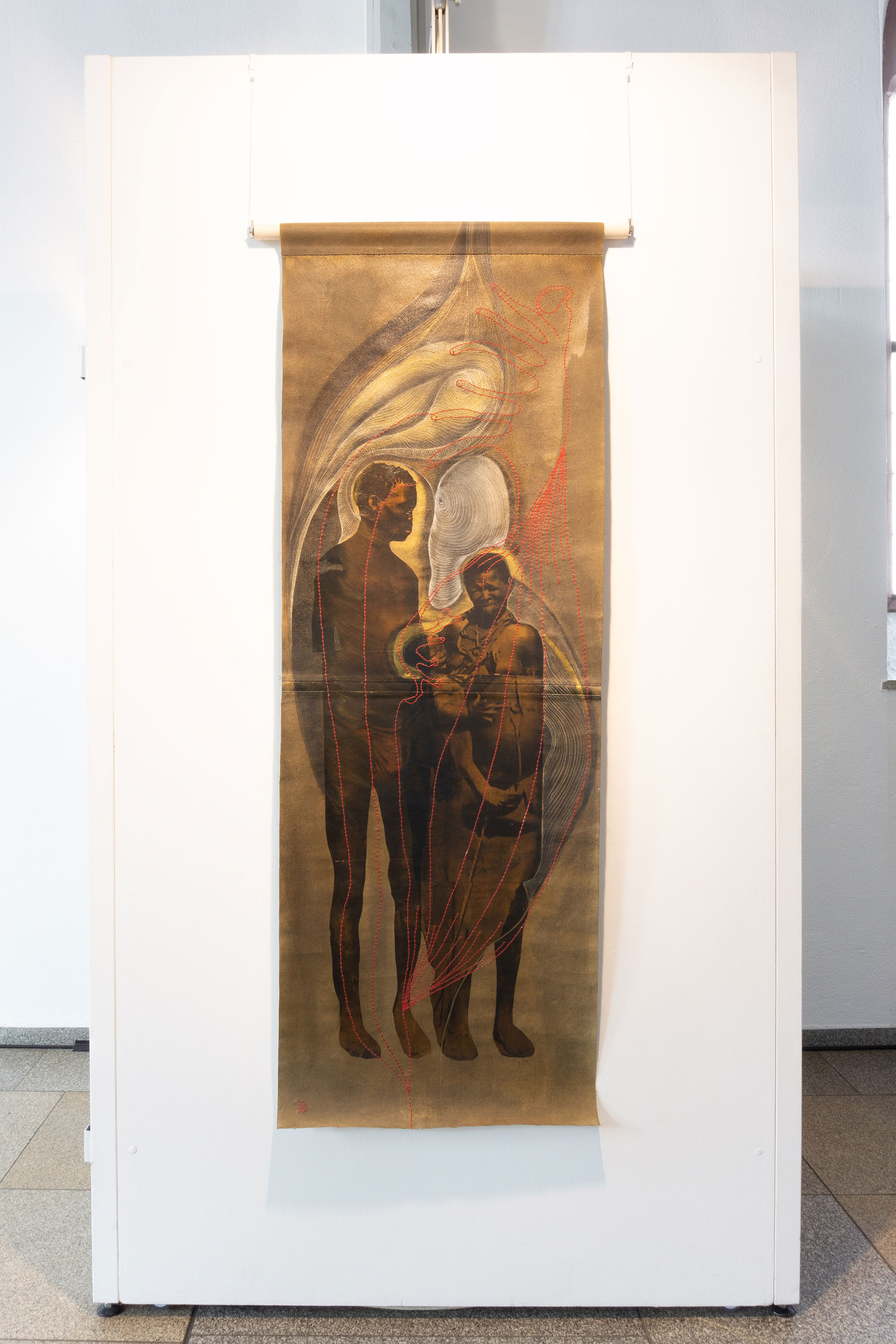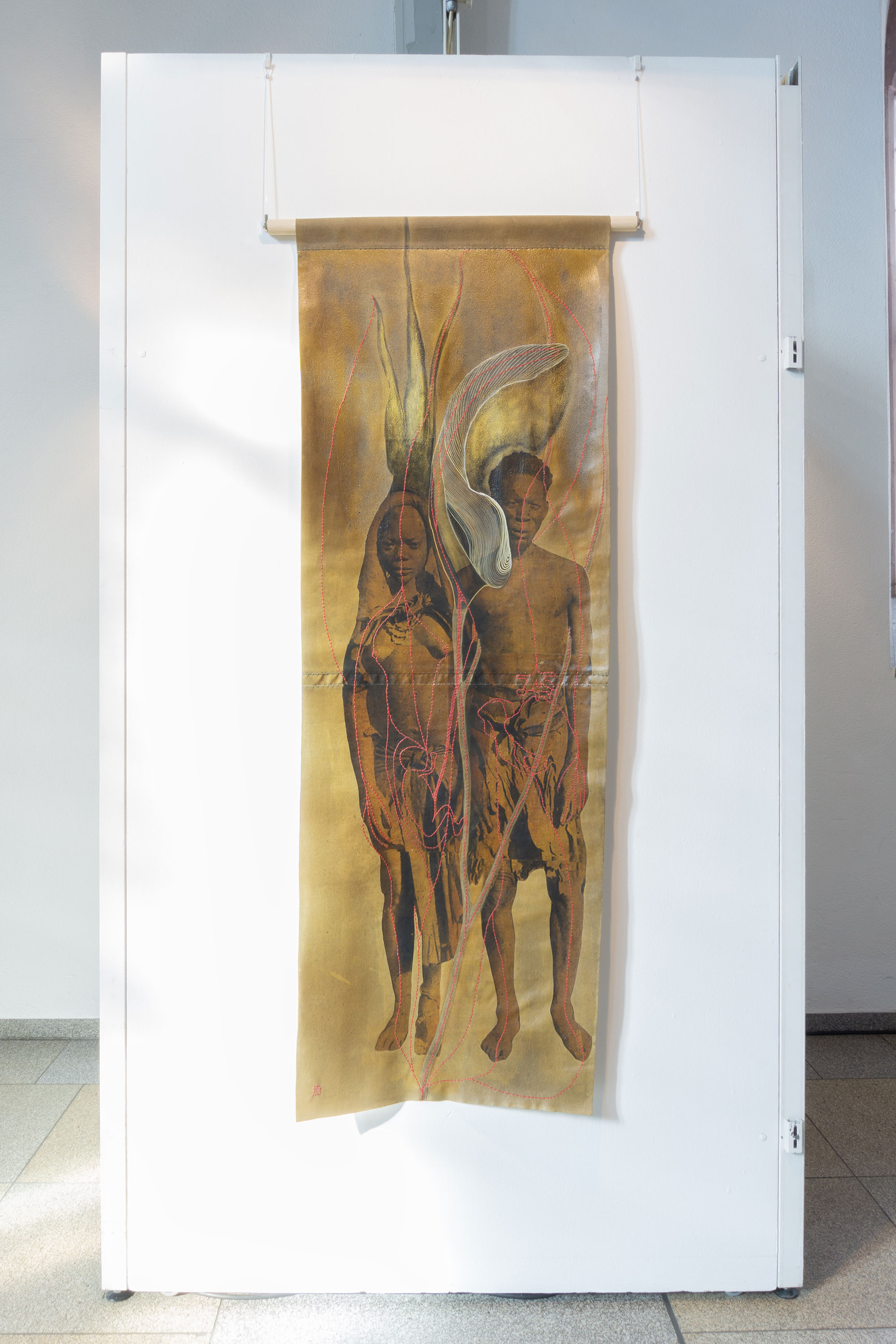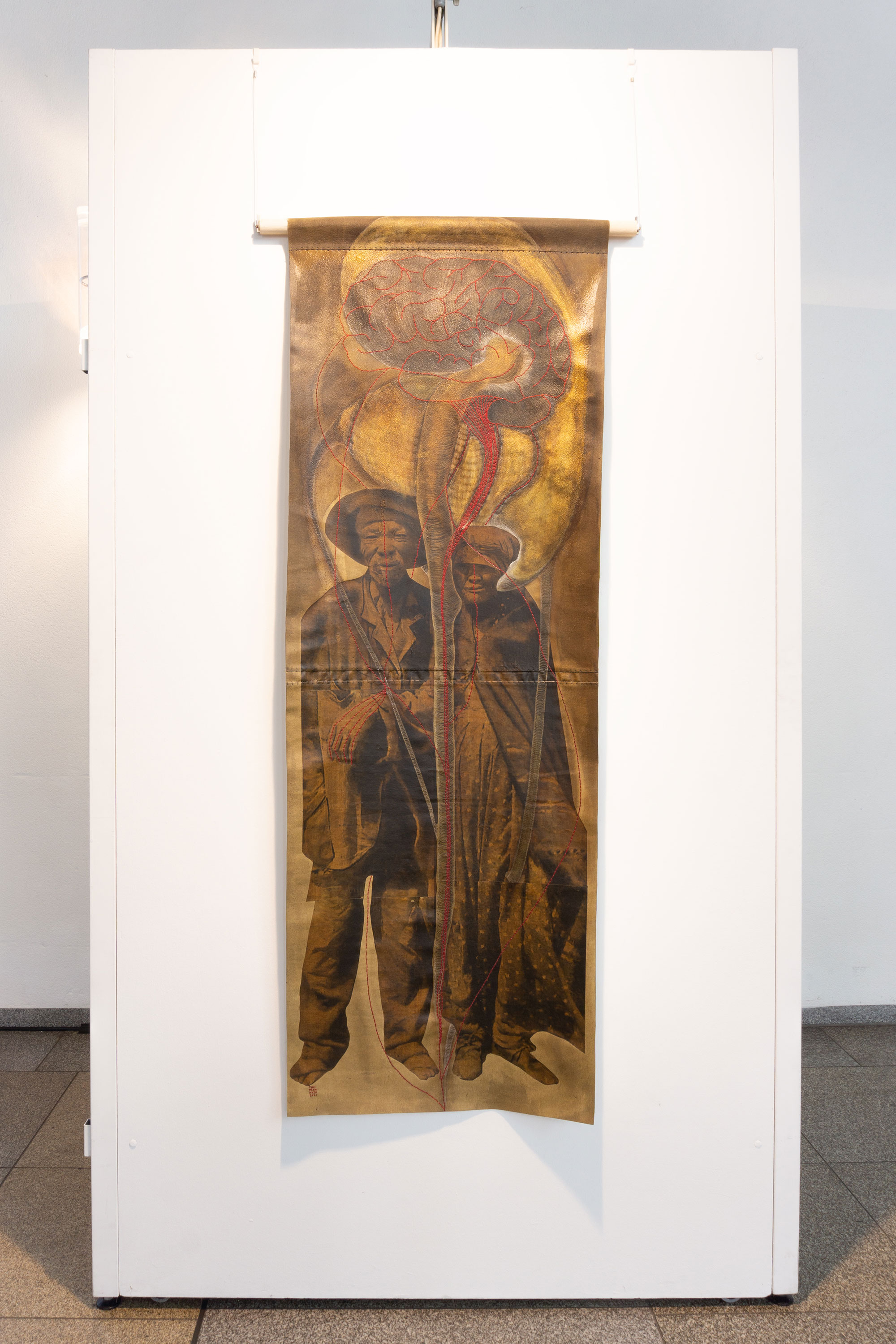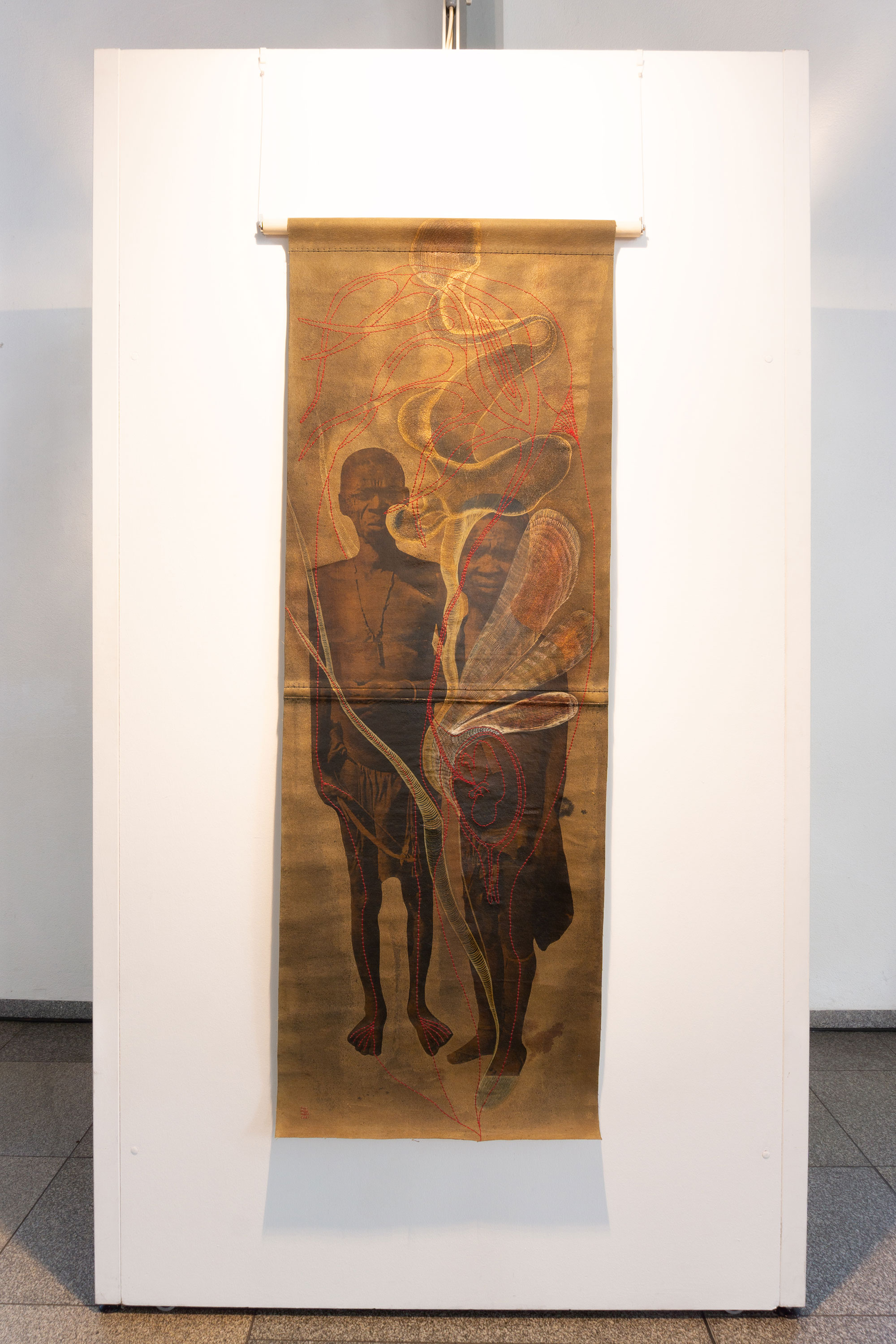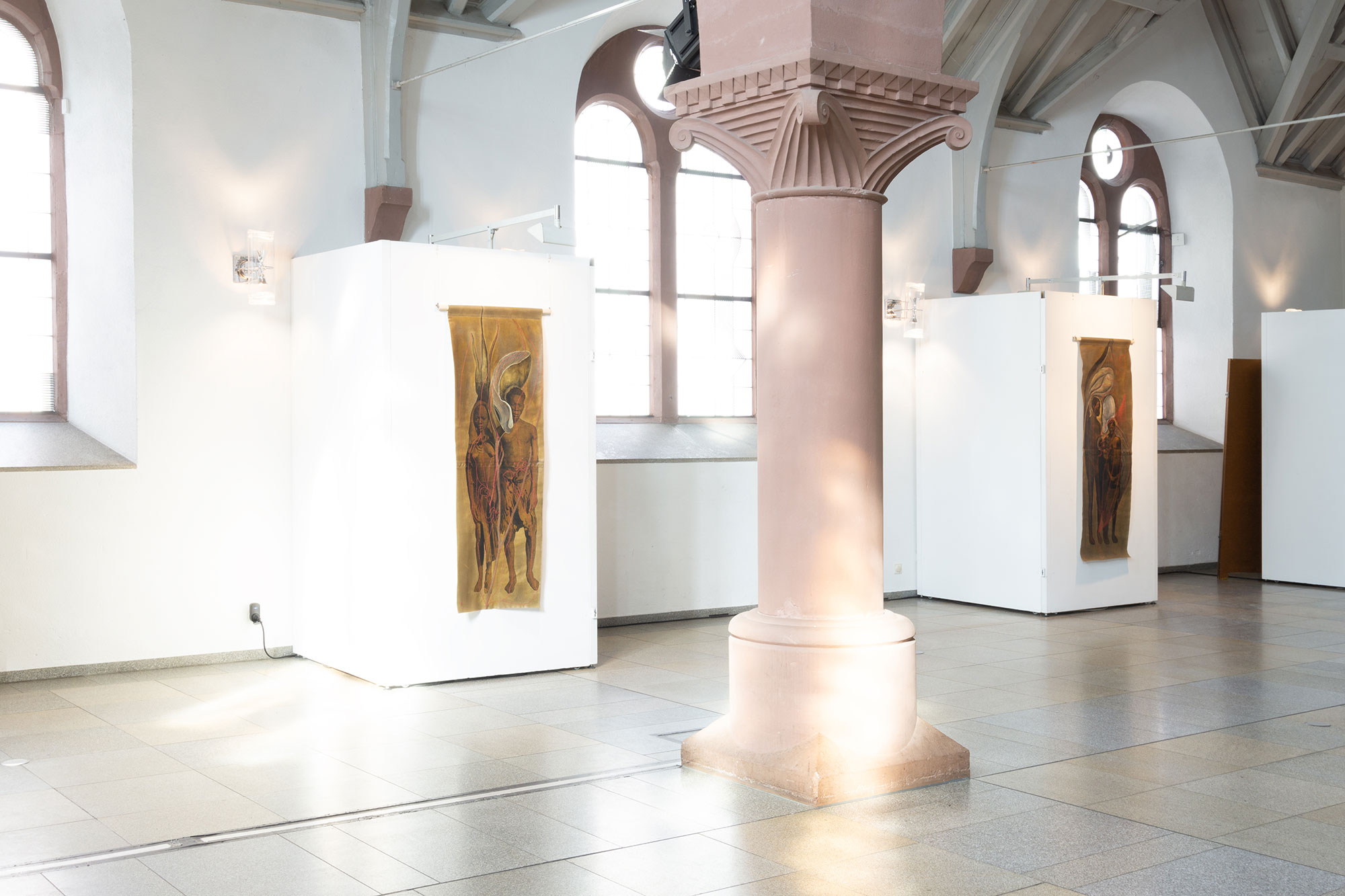This Memory Will Not Fade brings together the works of Gladys Kalichini and Tuli Mekondjo in a meditation on memory and the archive, a sort of cosmology of practices of remembrance. The exhibition provides insight into practices of re-membering through engagements with the archive as a living space of interaction in which memory is not fixed but exists in a continuous state of flux. The dialogue of the artworks by the two artists delves into what was, what is known, and what is still being uncovered or remembered. In their respective work, both artists ask questions around who has been left out of history, what truths have been buried, rewritten, or silenced in the name of comfort or control, and consider ways of re-tracing forgotten or unacknowledged pasts.
Tuli Mekondjo stitches the past and present in her works which are made with collages of historical postcards produced during the German colonial occupation of present-day Namibia between 1884 and 1915. The postcards depict local people in Aawambo homesteads in their respective indigenous dress. Mekondjo scales up and transfers the images of the men, women, and children onto cotton fabric works and then applies mahangu (millet) grain, resin, paint, and ink. The artist layers drawings and embroidery of vein-like formations, wombs, ovaries, fallopian tubes, cells, breasts, and fetuses across the cotton panels and photo transfers. The four panels drape together in the space like a series of time portals connecting the past and the present. Sewing each work by hand in remembrance of the labor of local women, Mekondjo positions herself in dialogue with her ancestors, women, and the land to whom she pays homage through her practice.
Gladys Kalichini provides a feminist take on the reading of the archive as she engages with stories of women whom she argues are invisible in the public memory of revolutionary and liberation histories. As a starting point, she explores the historical narratives of women's collectives in Zambia and their involvement in the liberation of the former British protectorate. Her practice explores complex processes in which memories and stories about women become visible in intricate and intimate practices that relate to ideas of spirituality. She explores some of the ways in which memory is transmitted between human and infrastructural bodies to complexify notions of the archive as a retainer of memory rather than a static storage building. In this exhibition, Kalichini draws on the history of Bad Homburg as a place of healing and recuperation to engage with notions that relate to the restoration of the archive through photographically recollecting stories of women and their involvement in the process of the making of independent states in southern Africa.
Tending to the past is not always a return to wholeness as some omissions may not be completely restored or cleanly stitched back into place. However, what is passed on from generation to generation is not only loss, erasure or struggle but innumerable forms of collective recalling, resistance, and ritual - seen and unseen incantations of remembrance with an open invitation for more voices to join in quiet and loud proclamations of unforgetting. In paying homage to her ancestors and acknowledging women who have been left out of historical records, Mekondjo’s and Kalichini’s artworks in this exhibition become a meeting of collective memories, where the once hidden or silenced are actively and collectively made visible, audible, and re-contextualized. In inviting the public into This Memory Will Not Fade, the archive in turn becomes communally witnessed and nurtured not just as a record or passive repository of what happened, but as a participatory and persisting terrain informing present and future inevitabilities.
